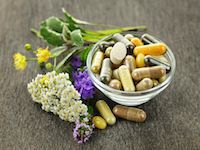What is Rheumatoid Arthritis?

Rheumatoid arthritis is inflammation of one or more of your joints. It is an autoimmune disorder which causes the lining of the joints to break down.
What does it feel like?
You feel pain in your joints and stiffness. The pain may get worse as you get older. The type of arthritis you have could make your pain feel different. You may have swelling, redness, deformities or less range of movement in your joints.
What causes rheumatoid arthritis?
The reason your own immune system attacks your joints is unknown. It is more common in women and can run in families.
How can I feel better?
Keep moving

Low impact exercise can help decrease pain and stiffness. Pool exercises, biking, swimming, strength training, and flexibility exercises could help. Talk to your healthcare professional about what kind of exercise is right for you. It will also depend on which of your joints are involved. Remember, lack of exercise can make your joints feel more stiff and painful!
Eat healthy
Being overweight can put stress on your joints. It is important to maintain a healthy weight. The anti-inflammatory diet is a good choice. Eat more vegetables and fruits, and healthy fats including oily fish. Eat fewer unhealthy fats like those that come from animal products like meat and dairy. This could help to decrease the inflammation and pain from the arthritis.
Try any of these body therapies
These types of therapies could help you reduce your symptoms.
- Acupuncture: This Chinese Medicine treatment involves inserting thin needles into the skin. It can reduce pain and improve movement in patients with rheumatoid arthritis.
- Massage Therapy: This may provide you with short-term pain relief and improve your physical function.
- Physical Therapy: A physical therapist will show you exercises to get stronger and more flexible.
Consider herbal and dietary supplements

You can consider taking some herbal and dietary supplements. Ginger, turmeric, green tea and fish oil can help fight inflammation. Many of these can affect your medications though. Be sure to talk to your healthcare professional before taking any herbal or dietary supplements.
Explore the mind-body connection:
- Yoga: This mind-body exercise can help you improve your strength and flexibility. It can also help you feel better emotionally too! There are many types of yoga you can try. Find a teacher who can help you with your specific needs.
- Tai chi: This is a Chinese meditative practice. It involves gentle, flowing movements. It can help improve balance and stability. It may also reduce anxiety.
- Mindfulness-Based Stress Reduction (MBSR): This is a type of meditation training. Usually it is taught in an eight-week class. For some people it can help reduce the pain related to arthritis.
Print Version
References/Resources
Additional Information
https://nccih.nih.gov/health/tips/chronic-low-back-pain
National Center for Complementary and Integrative Medicine
University of Wisconsin Integrative Medicine Department
References
Manyanga T, Froese M, Zarychanski R, et al. Pain management with acupuncture in osteoarthritis: A systematic review and meta-analysis. BMC Complement Altern Med. 2014;14:312-6882-14-312.
Shengelia R, Parker SJ, Ballin M, George T, Reid MC. Complementary Therapies for Osteoarthritis: Are They Effective? Pain management nursing : official journal of the American Society of Pain Management Nurses. 2013;14(4):10.1016/j.pmn.2012.01.001. doi:10.1016/j.pmn.2012.01.001.
Uhlig T. Tai chi and yoga as complementary therapies in rheumatologic conditions. Best Pract Res Clin Rheumatol. 2012;26(3):387-398.
Veldhuijzen van Zanten JJ, Rouse PC, Hale ED, et al. Perceived barriers, facilitators and benefits for regular physical activity and exercise in patients with rheumatoid arthritis: A review of the literature. Sports Med. 2015;45(10):1401-1412.
Patient Education Materials
- Acupuncture
- ADHD
- Allergic Rhinitis
- Anxiety
- Aromatherapy
- Asthma
- Autism
- Back Pain
- Biofeedback Therapy/Training
- Breathing Techniques
- Cancer Symptoms
- Chiropractic
- Constipation
- Depression
- Diabetes
- Dyslipidemia
- Eczema
- Elimination Diet
- Fibromyalgia
- GERD
- Headache
- Healthy Diet
- Healthy Weight / Obesity
- Heart Disease
- High Blood Pressure
- Inflammatory Bowel Disease
- Insomnia
- Irritable Bowel Syndrome (IBS)
- Massage Therapy
- Meditation
- Menopause
- Menstrual Disorders
- Osteoarthritis
- Physical Activity
- Probiotics
- Progressive Muscle Relaxation
- Supplements
- Tai Chi
- Yoga